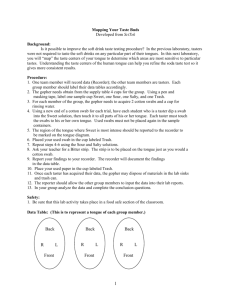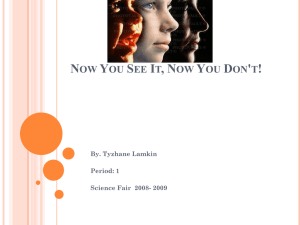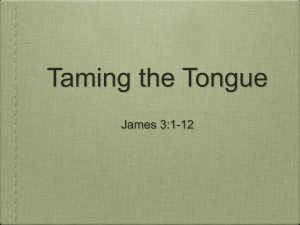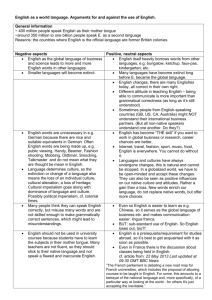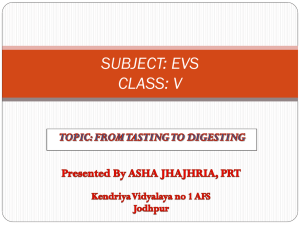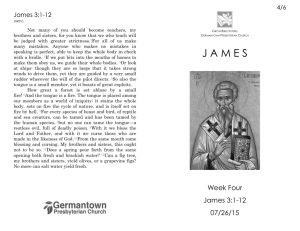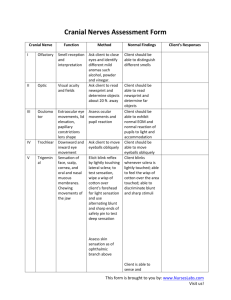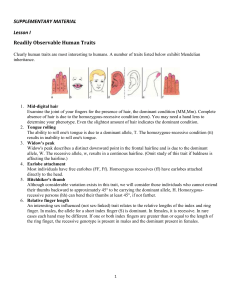Human Senses Lab
advertisement
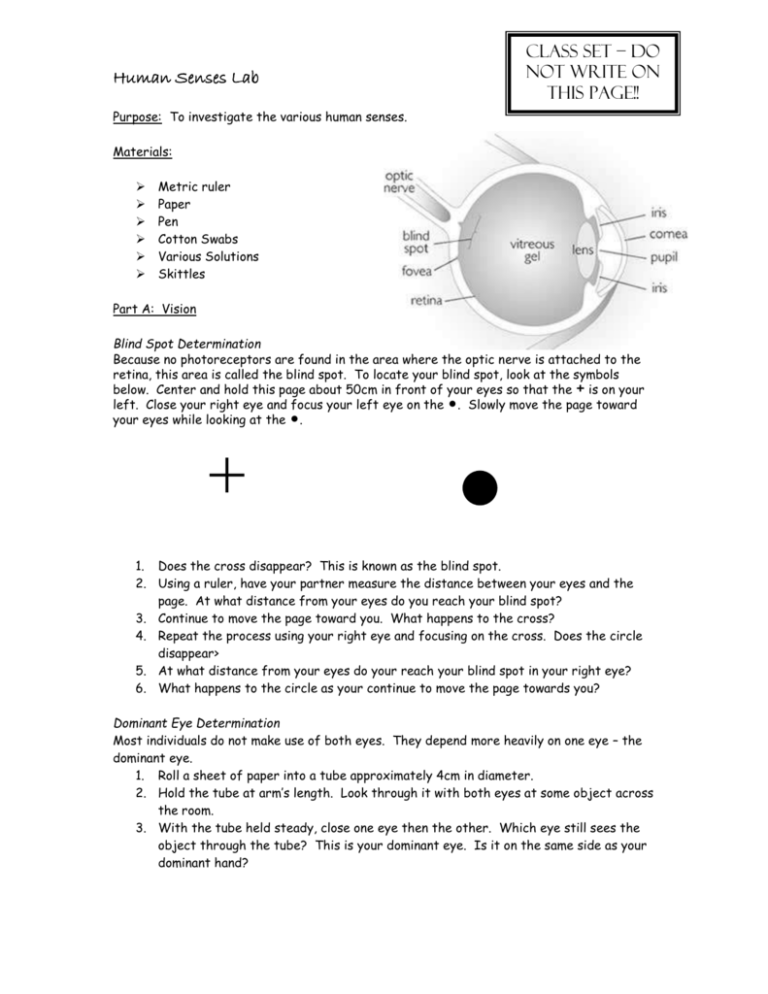
Human Senses Lab Class Set – Do not write on this page!! Purpose: To investigate the various human senses. Materials: Metric ruler Paper Pen Cotton Swabs Various Solutions Skittles Part A: Vision Blind Spot Determination Because no photoreceptors are found in the area where the optic nerve is attached to the retina, this area is called the blind spot. To locate your blind spot, look at the symbols below. Center and hold this page about 50cm in front of your eyes so that the + is on your left. Close your right eye and focus your left eye on the ∙. Slowly move the page toward your eyes while looking at the ∙. + 1. Does the cross disappear? This is known as the blind spot. 2. Using a ruler, have your partner measure the distance between your eyes and the page. At what distance from your eyes do you reach your blind spot? 3. Continue to move the page toward you. What happens to the cross? 4. Repeat the process using your right eye and focusing on the cross. Does the circle disappear> 5. At what distance from your eyes do your reach your blind spot in your right eye? 6. What happens to the circle as your continue to move the page towards you? Dominant Eye Determination Most individuals do not make use of both eyes. They depend more heavily on one eye – the dominant eye. 1. Roll a sheet of paper into a tube approximately 4cm in diameter. 2. Hold the tube at arm’s length. Look through it with both eyes at some object across the room. 3. With the tube held steady, close one eye then the other. Which eye still sees the object through the tube? This is your dominant eye. Is it on the same side as your dominant hand? Near Point of Vision The distance from the eye to the nearest object that can be focused clearly is called the near point of vision. 1. Place one hand over an eye and focus on a pen held at arm’s length. 2. Gradually bring the pen closer to your eye, focusing continually until the pen begins to blur. 3. Have your partner measure the distance from the eye to the pen at the point of blurring. This is your near point of vision. 4. Repeat this process with the other eye and compare the two. Afterimage 1. Look at a bright light for 20 seconds. DO NOT LOOK AT THE SUN! 2. Now look at the wall or ceiling. Describe what you see. 3. Repeat the process and have your partner time the length of the period that the after image stays with you. Part B: Taste Your tongue has taste buds for salty, sweet and sour foods in different areas. Follow the steps below to identify these areas. 1. Obtain 2 cotton swabs for each person. 2. Dip one swab into each solution. Place the moistened swab on your tongue in this order: a. Tip of tongue b. Side of tongue c. Middle of tongue d. Back of tongue 3. Map your tongue on the Data Sheet. Part C: Taste and Smell Have your partner close their eyes for all the steps below. 1. Obtain a Skittle from your teacher. 2. While your partner is sitting, have him/her close his/her eyes and hold his/her nose. 3. Tell your partner to stick out his/her tongue. 4. Place a Skittle on their tongue. 5. Have your partner try to identify by taste alone the flavor you placed on their tongue. 6. Repeat record the results. Human Senses Lab Data Sheet Name Period Table 1. Observations Experiment Vision Blind Spot Observation Dominant Eye Near Point of Vision After Image Taste & Smell Skittle 1 Skittle 2 Analysis and Conclusions 1. What types of receptors are used in Part A? Parts B & C? 2. Why does your eye have a blind spot? 3. What conclusion can you make concerning the correlation between taste and smell? 4. On the tongue below indicate where you could best taste the sweet, salty, sour, and bitter solutions.

